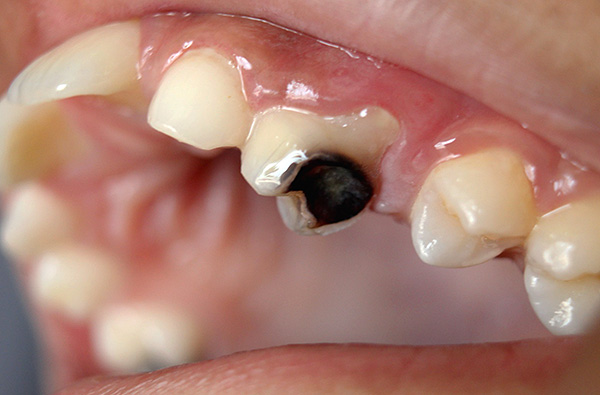
Next you will learn:
- What affects the cost of caries treatment in the first place;
- What is the relationship between the final price and the degree of neglect of the carious process;
- The dependence of the cost of treatment on the methods and technologies used;
- How many seals of different types today cost (cement, from a chemical composite and the so-called "light");
- As dentists who are not honest enough at hand, they can draw extra money out of a patient;
- What nuances are important to consider when treating caries in children, especially when it comes to the use of anesthesia or sedation;
- 5 simple tricks with which you can significantly save on the treatment of caries ...
Practice shows that a large part of the population today is literally scared by myths about the high cost of caries treatment, and in many cases it is for this reason that the trip to the dentist is unreasonably long. Suddenly the price will be too high - for example, 10 times higher than originally planned?
And indeed, why does it happen that some people can be given a seal for only 500-1000 rubles, while others have to pay 4-7 thousand rubles and even more for the same service?
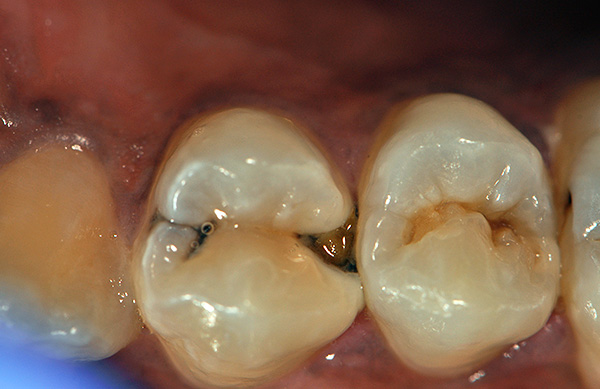
In fact, the price of dental therapy is formed taking into account many factors, taking into account which you can save a lot by getting a quality service with maximum benefit. We’ll talk about this later and more in detail ...
On a note
Caries is a local process of destruction of tooth hard tissues, which begins with focal demineralization and ends with the formation of a carious cavity. In the absence of treatment, it passes into other diseases (complications of caries) - pulpitis and (or) periodontitis.
Is there a connection between the cost of treatment and neglect of the carious process?
To understand the pricing policy in most dental institutions, it is useful to imagine how dentists classify caries, since its stages, that is, the degree of neglect of the carious process, in 70-80% of price lists are taken as the basis for determining the final cost.
So, for ease of recording the work of dentists, the following classification of carious processes by the depth of the tooth lesion was proposed:
- Initial caries (focal demineralization);
- Superficial caries;
- Average;
- Deep.
In the price lists most often only the last three types are indicated, and in practice, work is carried out with only two: medium and deep caries. The fact is that in most cases people turn to dentistry even when the carious cavity becomes visible to the naked eye, or even painful sensations appear (short-term pain from a sweet, cold).
The photo below shows an example of deep caries in the cervical area of a chewing tooth:
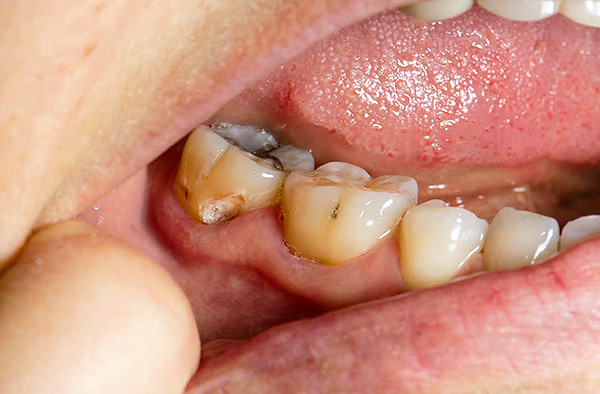
Therefore, in 90-95% of all applications, the first two points of classification do not even appear in the work of a doctor, but they still need to be mentioned.
Now let's see why the degree of neglect of the carious process affects the cost of treatment so strongly:
- The deeper the tooth is destroyed, the more labor-intensive and professionally difficult treatment is to be. It is easy to understand that with medium caries, the carious cavity has a shallow depth and allows the doctor to cope with the task faster and more efficiently, carrying fewer risks and difficulties in relation to the proximity of the pulp (“nerve”) during operation with a drill.On the contrary, with deep caries, the dentist is dealing with a decent “hole” in shape and depth, which does not reach the pulp chamber in a matter of millimeters, and sometimes even a fraction of a millimeter! The doctor requires a lot of effort and skill to cope with the difficult task: to process the carious cavity with the highest quality, removing all infected areas, but at the same time not opening the pulp chamber and preventing overheating of the neurovascular bundle in it (otherwise later, after installing the seal, pulpitis will develop). Therefore, one of the reasons for the difference in price between the treatment of medium and deep caries is the special preparation (technology) before filling. On average, the difference is from 300 to 1000 rubles;
- In addition, the stronger the carious process is launched, there, as a rule, more surfaces of the tooth are involved in it. And with each surface the doctor needs to work on, including its restoration.
It is interesting
Some dentists, in order not to lose customers, ignore the dependence of the cost of treatment on the number of tooth surfaces affected by caries.
So, in groups of masticatory teeth, the front and distant “walls” are almost always affected, in addition to the masticatory surface, which the doctor can easily combine in treatment and put one monolithic and load-resistant filling rather than “sculpt” to increase the cost of the price list 2-3 and more fillings per tooth.
The situation is more complicated with the front teeth, in relation to which the requirements for the color and shape of the restored tooth are increased.
In this case, the doctor has to explain to the patient before treatment that the work will be done on the lateral surfaces of the tooth, which greatly complicates and lengthens it in time. Not to mention the consumption of material and additional funds that are important in the work. Since the price most often indicates the treatment of an additional carious wall with a significantly reduced price, problems usually do not arise.
The dependence of the cost of treatment on the methods and technologies used
As for the initial and superficial caries, then they are not encountered so often in most clinics. And it would seem that the price for the treatment of such defects should be significantly lower than for the treatment of medium and deep caries. However, here everything is not as simple as it might seem at first glance.
For example, the treatment of caries in the white spot stage (the initial stage of enamel demineralization) using modern ICON technology costs an average of 2,000 to 6,000 rubles. It may seem a little expensive, but here the patient pays for the opportunity to get rid of carious spots on the teeth, as well as spots of a different etiology, without a drill and anesthesia injections (which just is not needed).
An example of the treatment of caries in the stage of a white spot using ICON technology:
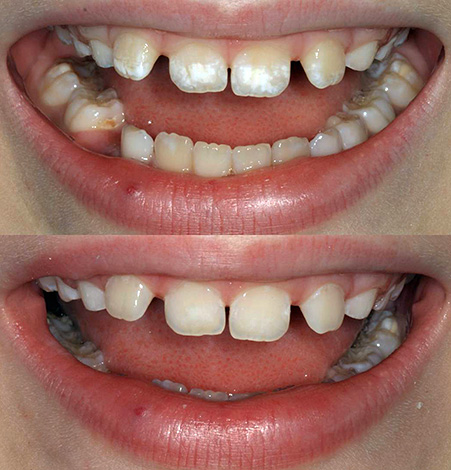
On a note
A not very expensive alternative to ICON technology is the conservative treatment of initial caries using applications of remineralizing solutions, deep fluoridation, as well as electrophoresis of calcium, phosphorus and fluoride ions. The meaning of these procedures is that a preparation is applied to the carious spot, which saturates the surface of the affected enamel with elements lost as a result of the activity of carious bacteria. Such treatment is carried out without anesthesia, without a drill, almost always requires several procedures. The process of restoring demineralized enamel often takes several weeks, and the degree to which a positive result is achieved depends on the clinical case and the professionalism of the doctor.
The main method for treating caries is currently the preparation of a tooth with a drill, followed by the installation of a filling. And here, modern technologies can contribute to the cost of the procedure: dental units are improved every year, comfort during the procedure increases - patients also have to pay for this.
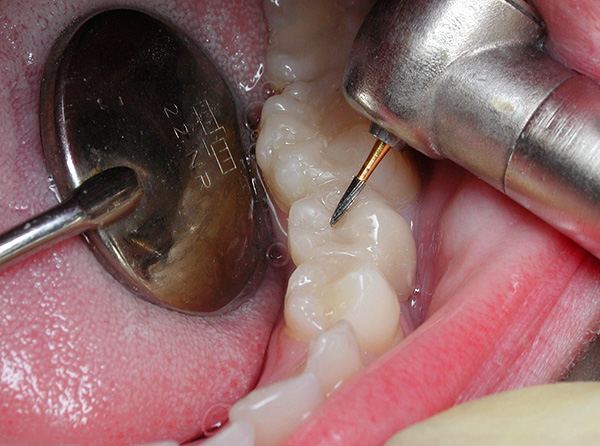
It should be noted that the high quality of the dental unit determines not only the patient's comfort during the treatment of caries and its complications, but also creates favorable conditions for the work of the doctor. Budget (usually Chinese) devices often create a lot of difficulties for the dentist during the appointment: the equipment is difficult to set up, pressure drops in the system are possible, breakdowns are frequent - all this can directly affect the quality of treatment.
The greatest impact on the result of work is exerted by the tips of the drill. Expensive tip options not only allow you to work almost silently, but also create ideal conditions when brushing your tooth from tooth decay: without vibration and with a plentiful supply of water. Cheap devices (especially in the range of 1-3 thousand rubles) not only scare patients with loud noise, but also often pose serious risks during tooth preparation related to damage to the pulp (primarily from excessive heat).
On a note
In the worst case scenario, when a doctor uses a cheap dental unit, the scenario, as a rule, is as follows: a person comes to the clinic to treat normal medium or deep caries, and as a result of such treatment, a sealed tooth begins to become unbearably painful in the coming days. The price of the issue is the need for re-treatment, only in this case it is already necessary to remove the “nerve”, clean the canals and only then put a seal. And all this, of course, is much more expensive than simply curing tooth decay.
It is also worth saying a few words about the so-called laser dentistry.
Using a laser to prepare a tooth is a great alternative for those who cannot stand the sound of a drill and are willing to try something special and expensive (although some clinics may now offer discounts and promotions for similar services at the price of a traditional technique).
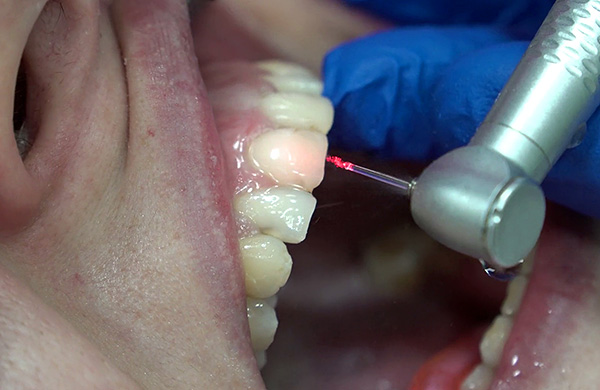
However, with all the comfort and painlessness of the procedure, it is not always possible to completely eliminate the use of a drill. That is, it may turn out that the client was lured for the treatment of caries with a laser, and the person as a result receives combined treatment, but its cost is much higher compared to the traditional option.
How much are the fillings now?
The price of consumables is one of the most burning issues not only for the doctor, but also for the patient. The fact is that in the price lists of clinics you can often see not only the cost of a particular service, but also the dependence of this cost on the material used: from cements (which, however, are extremely rare) and chemical composites to popular light-cured composites.
For example, in the price list it might look like this:
- cement seal - 200 rubles (1 month warranty);
- seal from a chemical composite - 500 rubles (3 month warranty);
- light seal “Gluma Charisma” - 800 rubles;
- Filtek Z-250 - 1200 rubles .;
- GRADIA DIRECT - 2200 rubles.
Etc. The arithmetic here is simple: the higher the purchase price of the material, the more expensive the seal from it will cost.
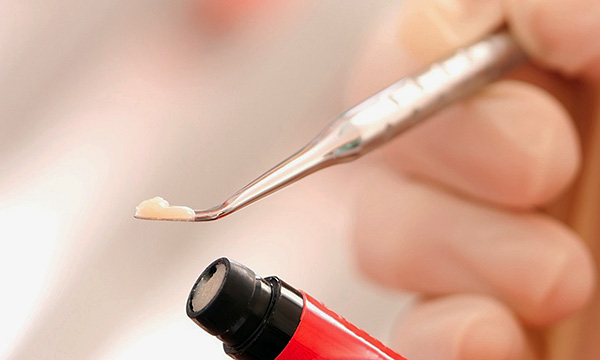
It is interesting
For example, the purchase price of 1 Glum Charisma syringe is about 1000 rubles (for about 15-25 seals), and Filtek is about 2000 rubles for a syringe (the cost is about the same). Grad is worth about 3 thousand rubles.
Cements today are worth a penny compared to modern filling materials.
Chemical composites can be purchased for 2-3 thousand rubles, but with one such package you can cure about 100 carious lesions: a significant savings for the doctor! However, you cannot put such materials on certain groups of teeth (for example, on the front with the destruction of the angle of the crown and incisal edge), as well as with a large loss of tooth walls.
Consumption of material is of great importance, therefore, clinics have provided in pricing the depth of carious lesions and the number of surfaces damaged by caries.In addition, additional categories of services are charged.
For example, the price may also indicate the price of gaskets under the seal - special materials that protect the pulp from the harmful effects of the composite and have therapeutic and antibacterial effects. There are gaskets made of "ordinary" phosphate cement (cheap), there are chemical cured glass ionomer cement, as well as "light" ones - everyone has different purchase prices.
On a note
On dental sites you can often find a phrase with a catch, about this type: "Treatment of secondary caries - from 800 rubles." In fact, the patient is almost 100% likely to pay one and a half, or even twice as much as the specified amount, since the maximum of these 800 rubles is treatment of 1 surface, lack of anesthesia and the cheapest material (sometimes even cement ) And only at the appointment the doctor will recommend additional “options” and voice their cost.
Fortunately, there are also clinics that honestly initially specify when pricing, which, among other things, will take into account the number of surfaces treated during tooth decay. Most often, the principle is as follows: each additional treated tooth wall will cost half the basic price for caries treatment.
Do not forget that, in addition to filling, the price of caries treatment is also formed by anesthesia - one of the favorite income items of many clinics.
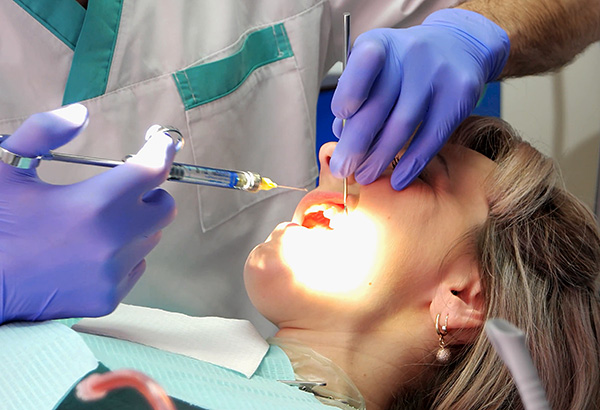
Approximate purchase price of anesthetics:
- Septanest (France) - 250 rubles (10 pcs.);
- Ubistezin (Germany) - 350-400 rubles (10 pcs.);
- Artikain, 1: 100 000 (Brazil) - 150-200 rubles (10 pcs.)
At the same time, the cost of 1 injection of anesthesia for a patient on average will cost 300-500 rubles.
The opinion of the practicing dentist
Some dental owners buy Brazilian Artikain for 150 rubles (10 pcs.), But in this case I would think about the possible risks and safety of the drug.
1001 ways to fool a patient with a dentist in the treatment of tooth decay
Can a dentist (if desired) turn the treatment of conventional caries into the most expensive medical procedure? Although today fewer clinics resort to such methods in order to keep clients and make them constant and grateful, however, it is useful for patients to know about some techniques.
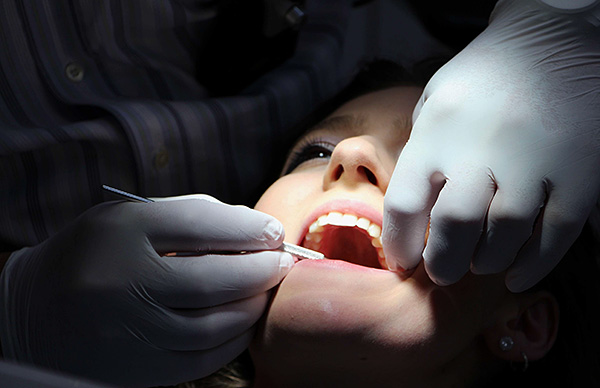
Of the official types of “deception”, one can name the vagueness of formulating the final cost of a dental treatment service. Often you can hear from the administrator that this procedure will cost as many rubles, or, as an option, is “in range”. And then the patient is surprised and rather disappointed to listen to how the dentist begins to consider everything thoroughly, pricing every little thing from the list of actions performed. For instance:
- Polishing fillings - 200 rubles;
- Special varnish coating for protection - 300 rubles;
- The use of abrasive strips for polishing a tooth wall - 100 rubles;
- The use of wedges - 100 rubles per wedge.
Etc. These "little things" are added to the cost of the basic components: anesthesia, fillings - taking into account the number of treated surfaces and with an emphasis on the depth of the lesion.
On a note
The most important thing: the doctor, having seated him in a chair, should even in an accessible and understandable form announce what the final cost of the procedure will be (plus or minus 300-500 rubles) before treatment. If this does not happen, then you should directly ask the doctor about it, otherwise the dentist will have too much "scope for creativity", and then the bill presented for payment can be unpleasantly surprising.
In addition, it is usually difficult for the patient to understand for himself whether there is really tooth decay on the tooth. And it can also be difficult to evaluate: what does the dentist see in the dental mirror (even if the doctor gives the mirror and suggests looking on his own). Sometimes a doctor may “erroneously” (read - intentionally) count the pigmentation on a tooth for caries, or deliberately find 3-5 carious teeth in his mouth, although outwardly they will not seem sick to the person himself - this cannot but alert.
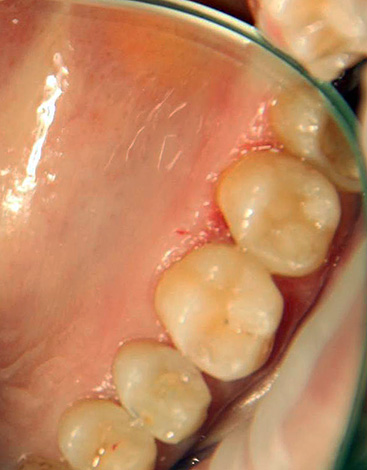
Statistics
Investigations of journalists who sat in the dentist’s chair for examination in 10 clinics of one metropolis (budget and private) to identify problem teeth were carried out on this occasion.The maximum number of carious teeth was found in expensive private dentistry, and in the budget (hospitals, clinics), on the contrary, they ignored the actual carious areas on the teeth.
So in this matter sometimes you have to look for a middle ground!
Anyway, if the doctor suddenly offers treatment for those teeth that seem quite healthy to you, it makes sense to consult at least one more clinic to clarify the situation (Fortunately, today such consultations can be obtained for free or at the lowest price).
Treatment of caries in children and its cost
Parents of babies today are well aware that healthy beautiful teeth are not only a guarantee of a comfortable and fulfilling life, but also a contribution to the socio-economic future of the child. To protect the baby from undesirable consequences, parents are ready to pay serious money for the prevention and treatment of caries in the early stages.
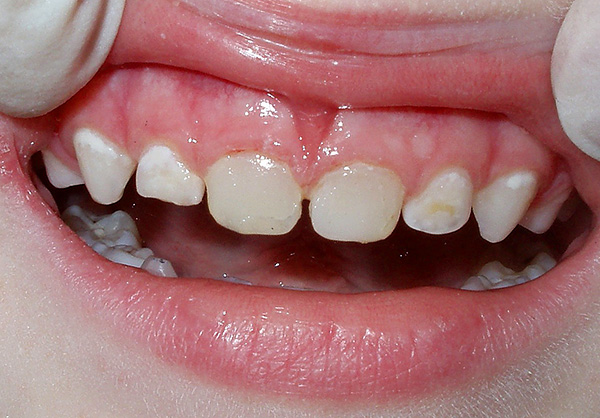
At the same time, many people do not take into account that the best way to keep a child's teeth healthy is to start taking care of them with the first erupted tooth. It is home hygiene measures, and not a dentist, that are the basis of a beautiful smile.
But, of course, home procedures do not always help 100% due to different nuances (laziness of parents, lack of time and knowledge), and in the meantime, a carious spot forms on the baby’s teeth under a thick layer of plaque. Taking into account the age of the child, the specific clinical situation and the wallet of the parents, different types of treatment can be selected: remineralization and fluoridation, sealing fissures with preliminary grinding of the affected enamel, ICON technique, processing with a drill followed by filling, laser treatment, etc.
In budgetary hospitals and polyclinics, where the conveyor for the admission of small patients works, most of all the service is free and does not meet the quality criteria: cheap fillings delivered to caries not completely excised end up almost on the second day. This happens even after visiting small private dentistry - both through the doctor’s fault and as a result of the child’s inability to adequately relate to what is happening in the office (panic fear of a white coat - the baby cries, screams, bites).
Therefore, the doctor may suggest treatment using general anesthesia (under general anesthesia) or sedation (the child remains conscious, but remains in a relaxed state). All this greatly increases the cost of the procedure, but sometimes it is the only possible option for dental treatment in the baby.
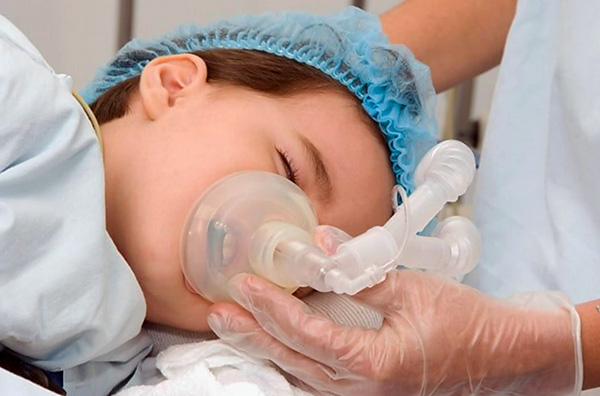
On a note
For example, xenon anesthesia lasting 1 hour can cost an average of about 25,000 rubles. A deep sedation using medazolam is in the range of 8000-10000 rubles (also for 1 hour).
In addition, the so-called colored fillings appeared in the arsenal of doctors, for which a number of clinics make an extra margin, although this is an ordinary material, convenient for treating caries only because children can later boast about color fillings in front of their friends. The desire to get such a beautiful seal can help the baby overcome his fear of the procedure.
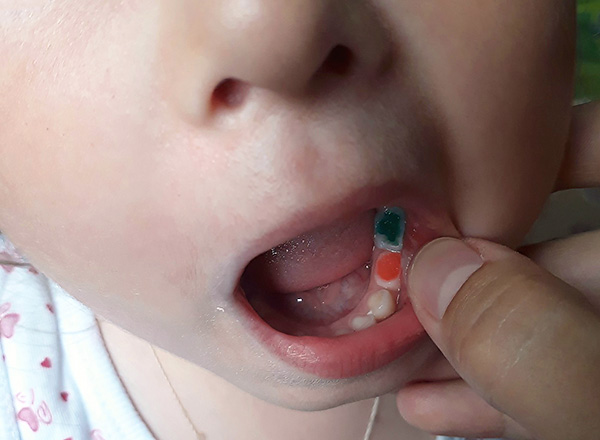
In pediatric dentistry, especially for the treatment of permanent teeth, light-cured composites have proven themselves well - an aesthetic and reliable material for which a guarantee is given (at its far from budgetary price).
It is interesting
"Light" seals are in a plastic syringe having a cap on one side and a special threaded piston on the other. The material in such syringes can be in a paste-like or in a flowing form. When the piston rotates clockwise, the material is smoothly squeezed out, and the dentist can use the special tool (trowel) to take the necessary portion for each layer of the future fillings and introduce them one by one into the prepared cavity in the tooth.Flowable composites come in handy in special cases - in particular, to recreate the wall of the tooth as accurately as possible near the gap.
Finding quality dental services for less
Residents of megacities can hardly be surprised by the fact that every year groups of dental tours are formed from among volunteers (most often from Moscow, St. Petersburg, less often from Yekaterinburg and other cities). Moreover, often these tours have a cultural and entertainment program that successfully combines with visiting a dentist and treating tooth decay much cheaper than in a megalopolis.

For example, the average cost of dental implantation in Moscow is such that the same procedure carried out, for example, in Murom, Novgorod or Cherepovets, can cost several tens of thousands of rubles cheaper. Savings can be achieved with other dental services, including the treatment of caries.
Today, among residents of Moscow and the region, Ryazan and Tver are gaining great popularity as similar tourist destinations. Such tours are conducted by companies licensed to organize such events. Signed contracts with the best dental clinics in a small city allow the clinics to have a constant flow of patients, and the company organizing the tours can benefit from paying for trips and advertising for dentists.
So, the prices in the dentists of Moscow and Ryazan were analyzed (a total of about 60 clinics), and the range of the cost of caries treatment for one tooth was determined:
- In Moscow, from 1,500 to 13,000 rubles;
- In Ryazan - from 800 to 4000 rubles.
Moreover, in Ryazan several clinics can carry out caries treatment using ICON technology for about 2000-2500 rubles, and in Moscow the cost of this procedure is close to 5-8 thousand, although the choice of clinics there is much greater (many tens).
On a note
It should be borne in mind that excessive cheapness, both in Moscow and in any other city, can be fraught with its pitfalls. The clinic is able to save on equipment, materials, tooling, salaries of doctors, administrators, etc. A combination of several such factors can lead to patient dissatisfaction and the need for treatment already for serious money elsewhere.
5 Ways to Save on Caries Treatment
Compliance with the following simple recommendations will allow you to save a lot of money in the long term, which otherwise could go to the treatment of caries and its complications:
- Let's start with the simplest and most obvious point - to regularly conduct oral hygiene (use a toothbrush, toothpaste, and also an irrigator to clean the interdental spaces, or dental floss). Practice shows that the apparent simplicity is deceiving here: in Russia, only about 3% of the population regularly use dental floss (and even fewer people use irrigator). In this case, caries very often begins precisely in the cervical region on the lateral wall of the tooth - that is, in the interdental space;

- Perform professional oral hygiene at the dentist 1-2 times a year. Dentists recommend regularly removing dental deposits (stone and plaque), and the rate of formation of such deposits is individual for each person;
- It is extremely important not to delay treatment in the initial stages of a carious lesion. It’s a paradox, but in order to save money on dental treatment, they need to be treated as soon as possible when a carious lesion appears. If the tooth is “started” and does not pay attention either to the symptoms (pain from sweet, cold, hot), or to the growing breadth and depth of the carious cavity, then the further fate of the tooth will depend on the nature of the development of the complication of caries - pulpitis or periodontitis. It is possible that you will have to go beyond therapeutic dentistry and get acquainted with prosthetics, the prices of which are an order of magnitude higher (especially if we are talking about prosthetics on implants);
- It does not hurt to glance at promotions and discounts, which today are often found in almost all clinics;
- Do not try to get to the clinic, which certainly serves coffee, and TVs are both in the waiting room and in the office itself. First of all, you need to focus on finding a good doctor, not an elite clinic (You can search for a good dentist by the reviews and recommendations of friends and acquaintances). There are many doctors who are high-level professionals who treat very high quality, inexpensive, and at the same time never allow themselves to draw extra money from the patient out of selfish motives.
Take care of your teeth and be healthy!
If you have personal experience in caries treatment, be sure to leave your review at the bottom of this page. How much did the procedure cost you and how much were you satisfied with the quality of treatment.
And here is the dentist’s view of pricing in dentistry
Useful video: how much "seal" lives

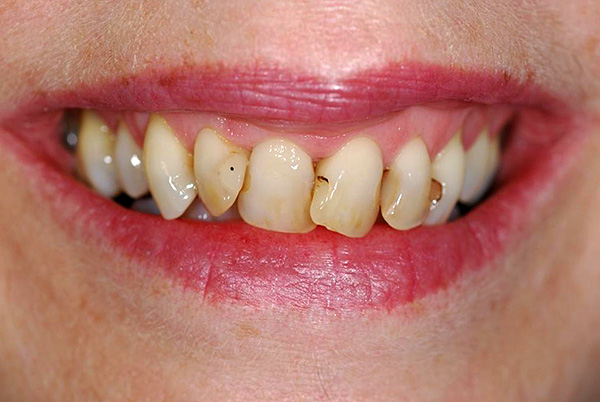
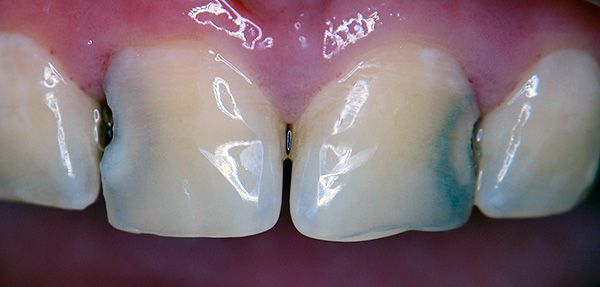
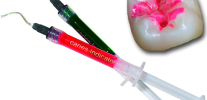
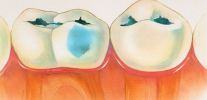
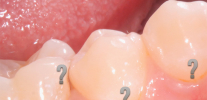
Very nice article! Thanks 🙂
Hello. Fillings located on the inner surface of the incisors are slightly visible through my front teeth. They look like semicircles between two teeth, especially in bright light. These fillings are normal in themselves, not brown, just the thickness of the front wall of the tooth is already small, and that is visible. What to do so that the front teeth are without translucent fillings?
Change seals? But is there any material today that will have the same light transmission as the tooth material? And the front wall of the tooth will become even thinner if the fillings are changed.
And if you put veneers, you have to grind a bunch of teeth, not just two front?
Hello, Eugene! Of course, it is necessary to change the seals. For example, in the arsenal of our clinic there is a filling material with a different degree of transparency, and the doctor would choose the one that suits your teeth exactly. In the case of a thin wall, teeth are prepared with extreme caution; healthy tissues are minimally affected. If the destruction of the teeth is significant enough and it is impossible to achieve a high aesthetic effect, then the option of manufacturing veneers or crowns is considered. At the same time, you don’t have to grind healthy ones.